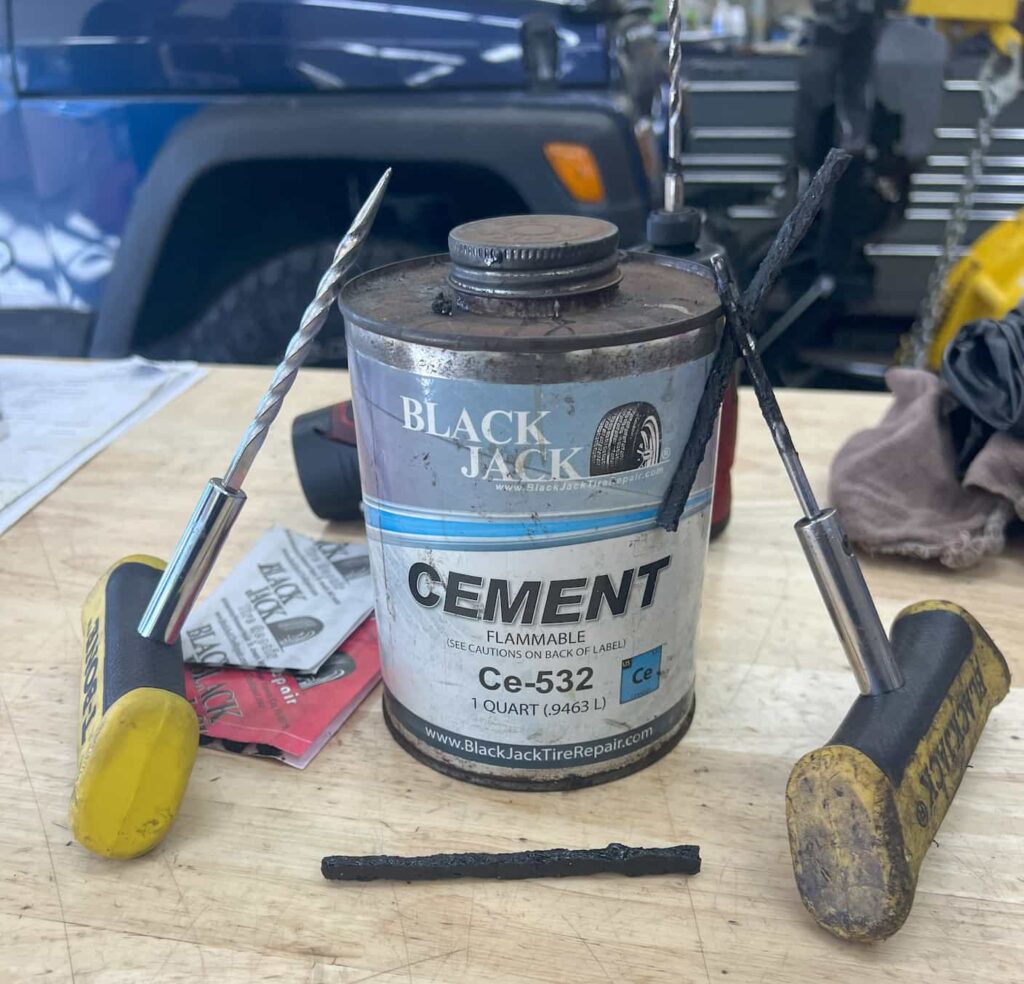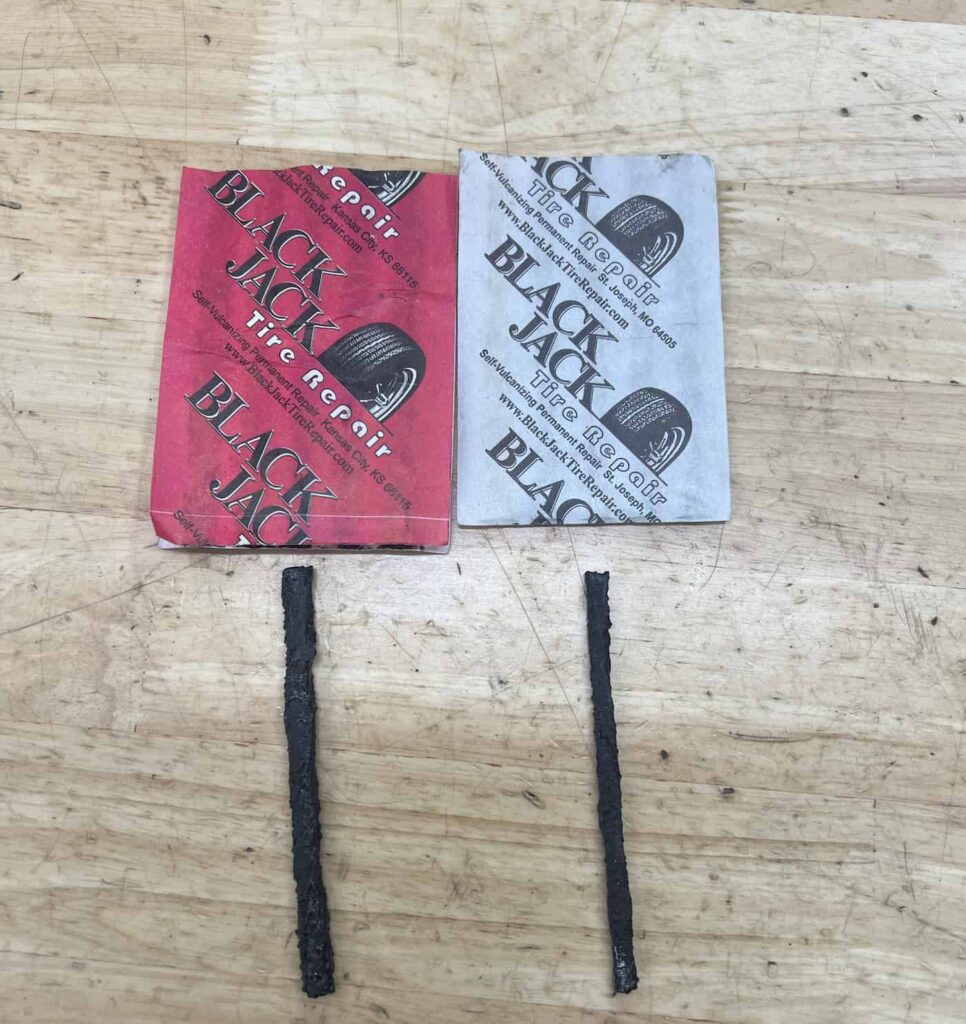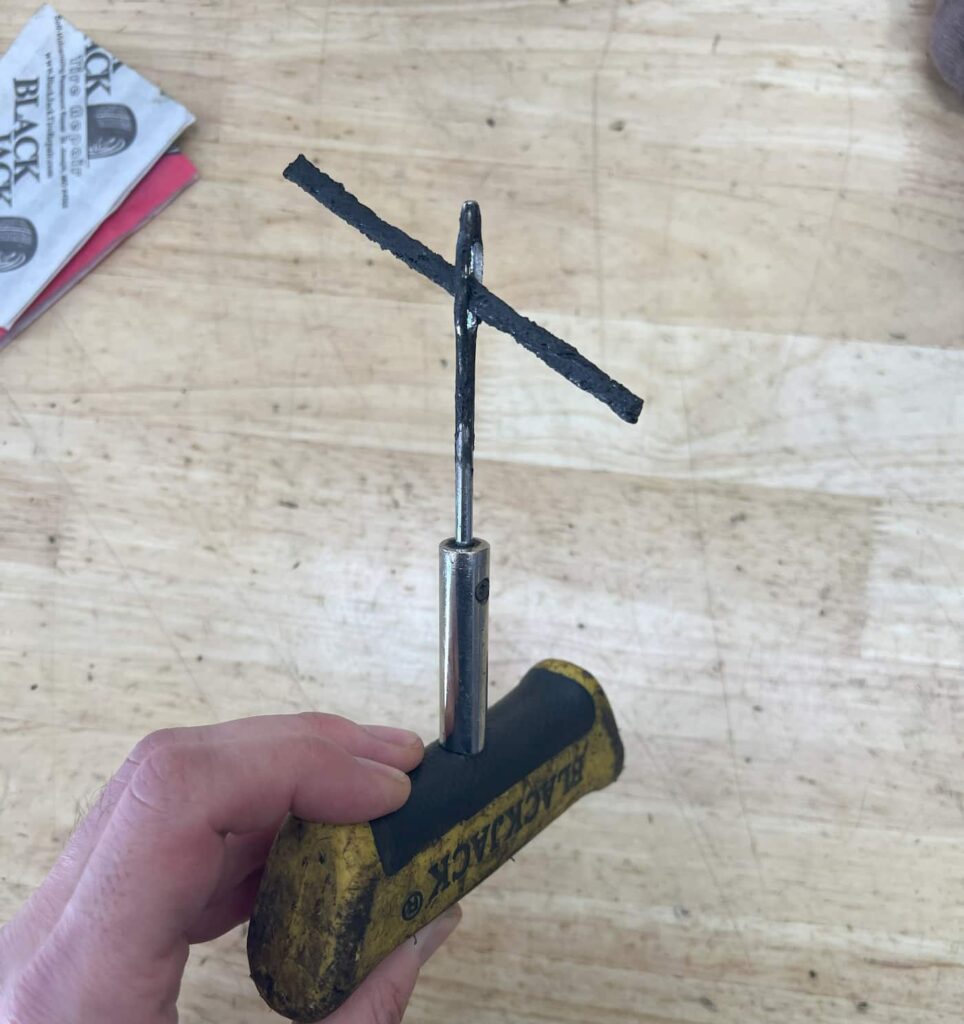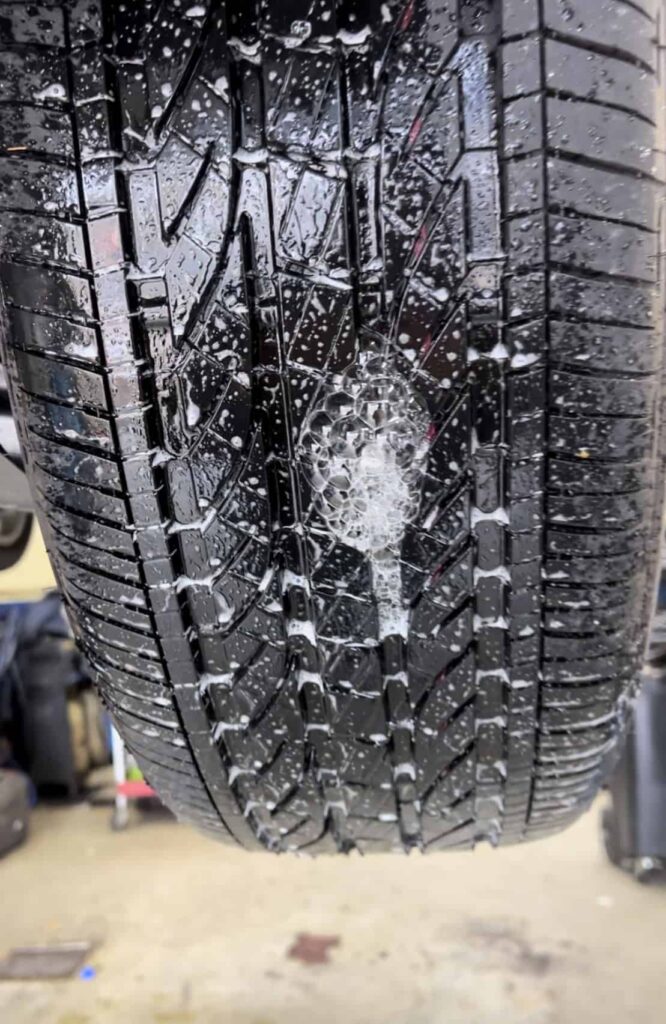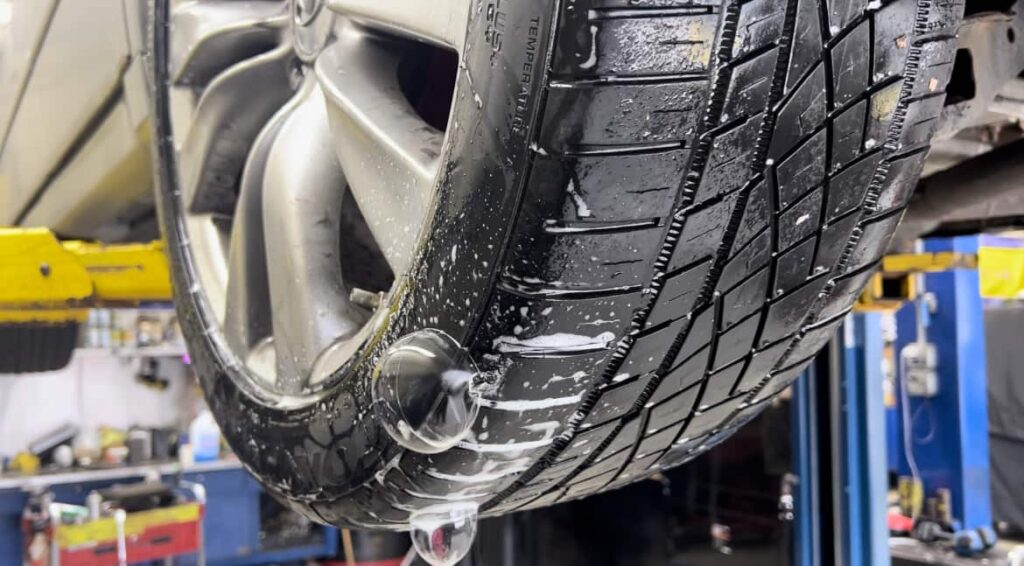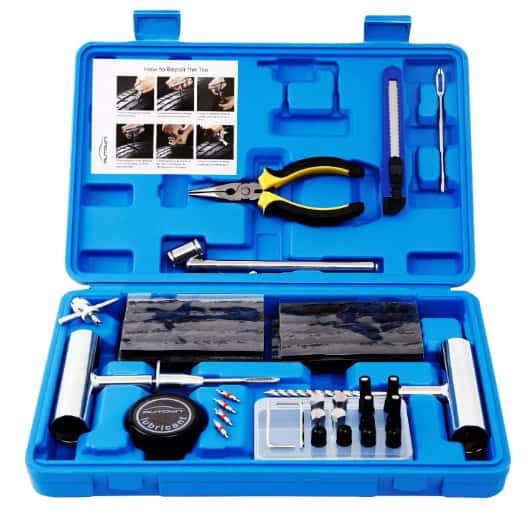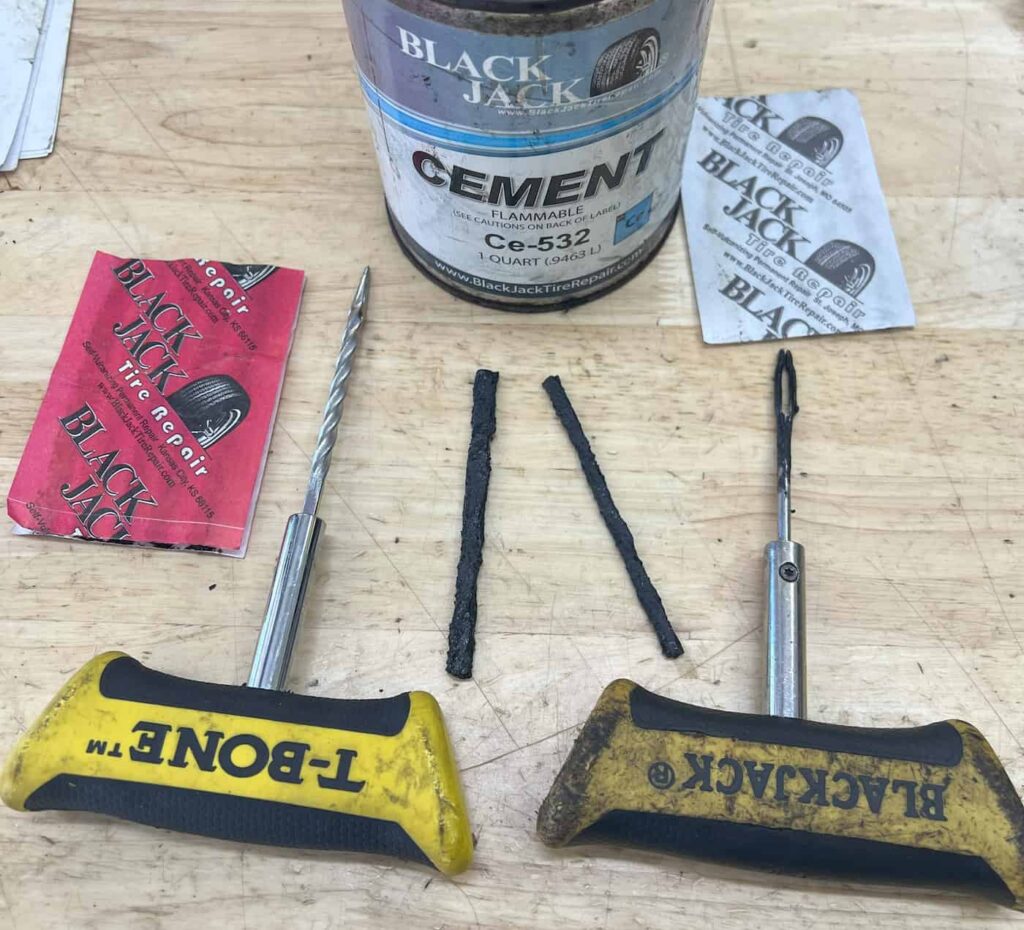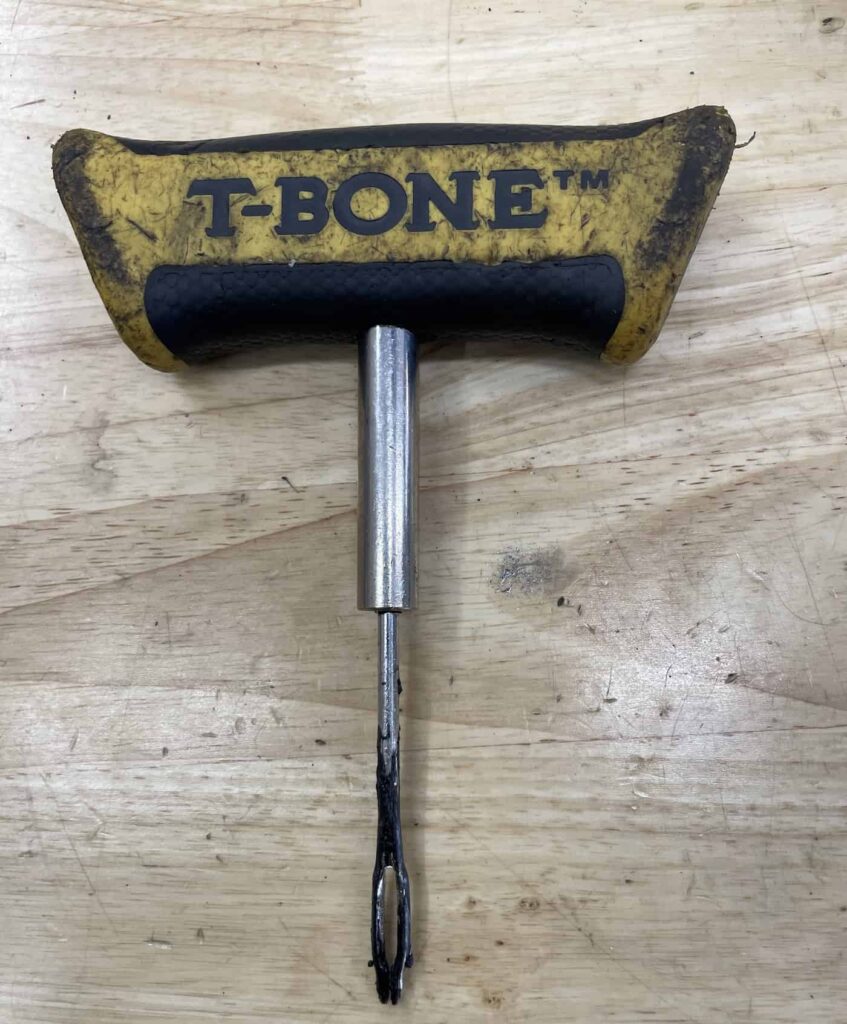In the realm of automotive maintenance, the debate around the permanence of tire plugs in repairing punctures is a topic of considerable interest. Whether one is faced with a flat on a rear tire or a small hole in the tread surface, the choice between a quick plug-only repair and a more comprehensive combination repair such as using a patch is critical.
Tire plugs, designed to seal punctures from the outside, offer a swift and convenient solution, yet questions about their ability to provide a permanent fix linger. This article aims to explore the effectiveness of tire plugs against industry guidelines, evaluating if they can truly hold air over the long term, and how they stack up in ensuring proper repair.
What Are Tire Plugs?
Tire plugs are a staple in the toolkit of both professional mechanics and everyday drivers for addressing tire punctures swiftly and effectively. Designed to be inserted into the puncture site from the outside of the tire, these simple yet ingenious devices create a seal that prevents air from escaping, thus restoring the tire’s integrity without the need for immediate, more intensive repairs.
Composition and Materials
A tire plug is made from a pliable, rubbery material, often coated with an adhesive substance to ensure a secure bond with the tire’s material. This strip is threaded through a puncture hole using a specialized insertion tool, filling the void and sealing the tire against air loss. The installation process doesn’t require the tire to be removed from the wheel, making it an easy and convenient roadside tire repair option.
How Tire Plugs Work
The principle behind tire plugs is straightforward: by filling the gap caused by a puncture, the plug prevents air from escaping, thereby allowing the tire to retain its air pressure. The effectiveness of this method hinges on the plug’s ability to meld with the tire material, creating a durable bond that withstands the forces of driving. As the tire heats up from use, the plug’s material can further fuse with the tire rubber, enhancing the repair’s durability.
Different Types of Tire Repair Kits
The market offers a variety of tire repair kits, ranging from basic plug kits to comprehensive packages that include patches, sealant, and rubber cement. Basic plug kits typically consist of a plug insertion tool, a reaming tool to clean and prepare the puncture site, and a set of rubber plugs.
Evaluating the Effectiveness of Tire Pligs
Understanding the effectiveness of tire plugs requires a comparison of their short-term benefits and long-term reliability. While tire plugs are celebrated for their immediate utility, their performance over time is influenced by several factors, including the size and location of the puncture, the quality of the plug and installation, the state of the tire, and the driving conditions encountered post-repair.
Short-Term Vs. Long-Term Effectiveness
In the short term, tire plugs are a proper tire repair, providing a rapid solution to get back on the road and prevent further tire damage. However, their long-term effectiveness varies. Properly installed plugs in ideal conditions (e.g., small, clean punctures in the tread area) can last for the remaining life of the tire. Yet, in less-than-ideal circumstances, such as large or angled punctures or extremely worn tire treads, the repair may not hold up as well over time.
Factors Affecting Durability
The durability of a tire plug repair is contingent upon:
The size and location of the puncture: Holes larger than ¼ inch or those located in the sidewall are not suitable for plug repairs. (use a repair patch for a large tire puncture)
Installation quality: A well-inserted plug that has been properly seated and trimmed can significantly outlast a poorly installed one.
Driving conditions: Exposure to extreme temperatures, rough terrain, or high speeds can impact the longevity of a plug repair.
Tire Tread: If a tires tread is extremely worn, a tire plug may not seal the hole properly.
How Far Can You Drive With a Plug Only Repair?
There is not a set distance or amount of time that is safe to drive with a plugged tire. Once the tread of the tire is worn, the tire must be replaced. Keep in mind, there is a difference between good plugs and low quality plugs. We recommend only using heavy duty tire plugs to properly repair a tire puncture.
Is a Tire Plug a Permanent Fix?
When tire plugs are used in the right situations, yes they are a permanent fix. A puncture on the sidewall of a tire or if the tread is extremely worn the tire is not repairable.
Comparative Analysis With Tire Repair Methods
When compared to other tire repair methods, such as patch repair or tire sealant, tire plugs offer a unique balance of convenience and effectiveness. A tire patch must be applied from the inside of the tire and can offer a more permanent repair but requires tire removal and specialized equipment. Tire sealants, meanwhile, provide an easy temporary fix but can complicate future repairs and may not be suitable for all types of punctures.
Pros and Cons of Using Tire Plugs
When considering tyre plugs as a solution for repairing punctures, it’s essential to weigh their benefits against potential drawbacks. This balanced approach ensures that drivers make informed decisions based on their specific needs and driving conditions.
Advantages of Using Tire Plugs
Immediate and Efficient Repair: The most significant advantage of tire plugs is their ability to provide a quick and efficient repair. Drivers can apply a tire plug in a matter of minutes, a crucial benefit when stranded with a flat tire.
Cost-Effective: Compared to professional tire repairs or replacements, tire plugs are an economical option. The low cost of a tire plug kit makes it an accessible choice for emergency repairs.
Simplicity and Convenience: The simplicity of the tire plug repair process means that even those with minimal automotive repair experience can properly repair their tires.
Durability: When installed correctly, tire plugs can last as long as the tire’s remaining lifespan, provided the puncture is in an optimal location and not too large.
Potential Drawbacks and Limitations
Temporary Solution for Some Repairs: While tire plugs can be a durable repair, they are not always a permanent solution. Punctures in certain locations, such as the tire sidewall, or larger punctures may require more extensive repairs or tire replacement.
Safety Concerns: Some safety concerns arise regarding the use of tire plugs, especially if the puncture is not adequately cleaned and prepared before installation. Improper installation or cheap plugs can lead to a slow leak or failed repair, posing a risk while driving.
Possible Voiding of Tire Warranty: Certain tire manufacturers may void the warranty if a tire has been repaired using a plug, especially if the tire repair does not comply with their guidelines.
Not Suitable for All Punctures: Tire plugs are most effective for small, straight punctures in the tread area. A screw or nail hole is perfect. Angled, large, or irregular punctures may not be effectively repaired with a plug alone.
Safety Considerations and Best Practices for Using Tire Plugs
To mitigate the drawbacks and enhance the effectiveness of tire plugs, adhering to safety considerations and best practices is crucial.
Inspect the Damage Carefully: Before opting for a tire plug, thoroughly inspect the puncture. Tire plugs are best suited for small, clean punctures in the tread area. Large or sidewall punctures should be professionally assessed.
Follow Instructions Precisely: When applying a tire plug, closely follow the kit’s instructions. Proper insertion and sealing are vital for the plug’s success and longevity.
Seek Professional Evaluation: After applying a tire plug, have the tire checked by a professional at your local repair shop. A professional can assess the tire repair and recommend if further repairs are necessary.
Monitor Tire Pressure: Regularly check the repaired tire’s pressure to ensure that the plug is holding and that there are no slow leaks. A sudden drop in pressure may indicate that the plug is failing and requires immediate attention.
How to Install a Tire Plug
Step 1: Identify the Puncture and Prepare the Tire
Inspect the tire thoroughly for punctures by visually examining the tread surface and or using the water and soap method.
Remove the object causing the puncture, if still present, using pliers or a similar tool.
Inflate the tire to about 35 Psi to help in the tire repair process.
Step 2: Clean and Ream the Puncture Channel
Use a reaming tool to clean the puncture channel. This step cleans the channel and creates enough space for the rubber plug. Move the tool in and out while twisting to ensure the hole is properly prepared.
Step 3: Prepare the Tire Plug and Insertion Tool
Select a plug from your repair kit. (Remember, cheap plugs don’t hold.)
Thread the plug through the eye of the insertion tool.
Step 4: Apply Rubber Cement
Coat the plug with rubber cement if recommended by your plug kit. This acts as a lubricant for insertion and helps create a better seal.
Step 5: Insert the Plug into the Puncture
Push the insertion tool and the plug into the puncture channel until about two-thirds of the plug is inside the tyre. The goal is to have the plug fill the puncture channel completely, with a small portion remaining outside to ensure a tight seal.
Step 6: Remove the Insertion Tool
Pull the tool out quickly and sharply, leaving the plug in place. The plug should now be sealing the puncture from the inside, with both ends visible on the outside.
Step 7: Trim the Plug and Inspect the Repair
Trim the excess plug material flush with the tyre tread surface using a sharp blade or cutting pliers. This prevents any imbalance or uneven wear on the tire.
Inspect the repair to ensure the plug is securely in place and there are no air leaks. You can spray soapy water around the repair site to check for bubbles, which would indicate a leak.
Step 8: Inflate the Tire
Inflate the tire to the vehicle manufacturer’s recommended pressure, then mount the tire back onto the car if it was removed, or lower the vehicle if the repair was performed with the tire on.
Step 9: Perform a Final Inspection
Conduct a final inspection and test drive the car to ensure there is no vibration or imbalance, and the tire repair holds under driving conditions.
